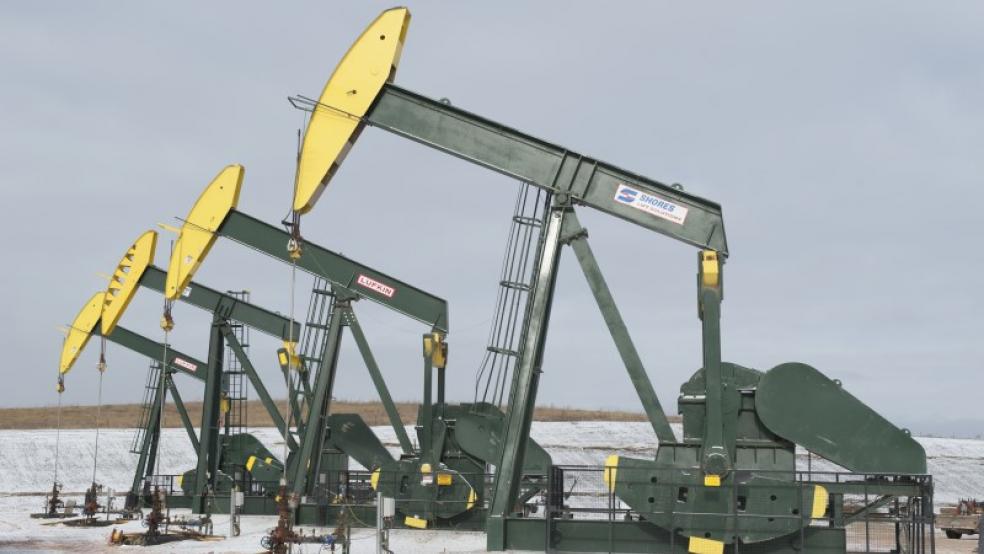More than half the United States’ oil reserves are located in its 100 largest fields. According to a new Energy Information Administration report, these massive fields account for 20.6 billion of the 36.5 billion barrels of oil, or 56 percent of the total.
The level of proven oil reserves in the United States has actually increased since the last time the EIA published the report in 2009. With enormous advancements in hydraulic fracturing and horizontal drilling, new sources of oil were not only discovered, but known sources that were depleted became economically viable once again. (The EIA did not disclose reserve estimates for any of the fields, but instead listed production levels to give a sense of size).
As a result, the 2015 list of the top 100 oil and gas fields looks quite a bit different from its 2009 predecessor. Shale fields surged to the top of the list, overtaking some larger conventional production. For example, Prudhoe Bay in Alaska topped the oil list in 2009, a field that was originally discovered in 1967 and saw its production peak decades ago. Now, Prudhoe Bay has fallen to third on the list. Another example is the number of fields from North Dakota on each of the rankings lists, a state that has been a huge supplier of new U.S. oil output. In 2009 only three North Dakota fields made the top 50. But in 2015, nine fields broke into the top 50.
But the winner of the largest oil field in the United States goes to – drumroll – the Eagleville field in the Eagle Ford Shale. For those following the shale revolution, it should come as no surprise that the Eagle Ford would rank high on the list. The Eagleville produced a massive 238 million barrels in 2013 (the year for which data is used in the 2015 report). The second largest was the Sprayberry in western Texas (99 million barrels), followed by Prudhoe Bay in Alaska (79 million barrels). In the top 10, Texas grabbed four spots, Alaska two, Colorado one, California one, and the Gulf of Mexico two.
Related: Why No One Really Knows Where Oil Prices Are Going
Even more interesting is the huge change in the top natural gas fields. In 2009, the Marcellus Shale - which spans Pennsylvania, Ohio, West Virginia, and New York – barely received a mention. In the 2015 edition, the Marcellus is far and away the largest natural gas region in the country. The Marcellus’ 2.8 trillion cubic feet in natural gas production in 2013 was 45 percent higher than the second largest field on the list, the Newark East (part of the Barnett Shale).
Detailed lists below (ranked in order of reserves, but EIA only provided 2013 production figures):
Top 10 Oil Fields
1. Eagleville (TX) – 238 million barrels
2. Spraberry (TX) – 99 million barrels
3. Prudhoe Bay (AK) – 79 million barrels
4. Wattenberg (CO) – 47 million barrels
5. Briscoe Ranch (TX) – 62 million barrels
6. Kuparuk River (AK) – 29 million barrels
7. Mississippi Canyon (Fed Gulf) – 15 million barrels
8. Wasson (TX) – 19 million barrels
9. Belridge South (CA) – 23 million barrels
10. Green Canyon (Fed Gulf) – 27 million barrels
Top 10 Natural Gas Fields
1. Marcellus Shale (PA & WV) – 2,836 billion cubic feet
2. Newark East (TX) – 1,951 billion cubic feet
3. B-43 Area (AR) – 1,025 billion cubic feet
4. San Juan Basin (CO & NM) – 1,024 billion cubic feet
5. Haynesville Shale (LA) – 1,425 billion cubic feet
6. Pinedale (WY) – 568 billion cubic feet
7. Carthage (TX) – 653 billion cubic feet
8. Jonah (WY) – 239 billion cubic feet
9. Wattenberg (CO) – 304 billion cubic feet
10. Prudhoe Bay (AK) – 147 billion cubic feet
This article originally appeared in OilPrice.
Read more from Oil Price:
Media Spin On Oil Prices Running Out Of Fuel
Bad Jobs Report Could Be Good For Oil Industry
Who’s To Blame For The Oil Price Crash?




